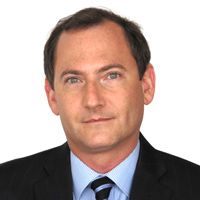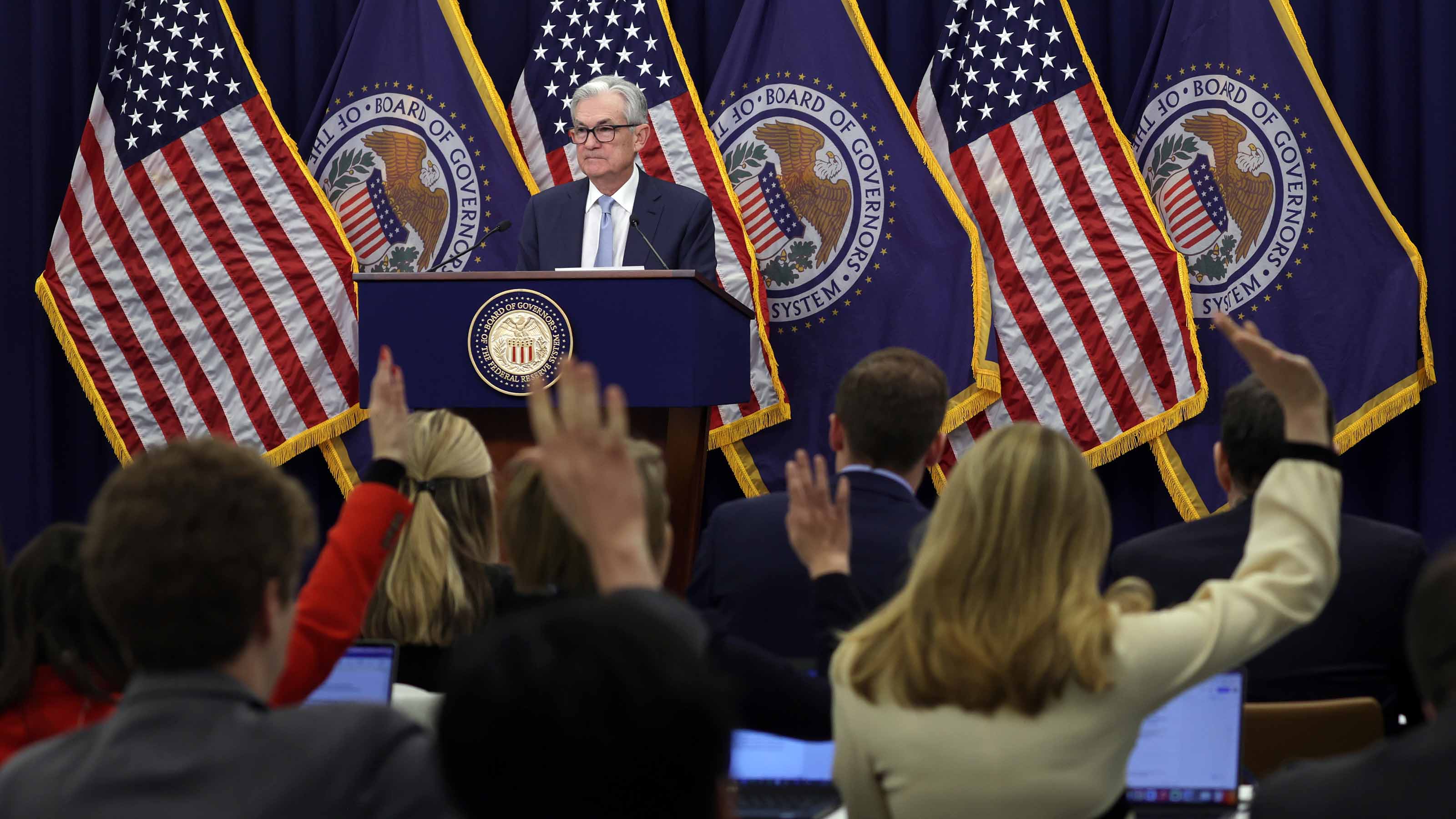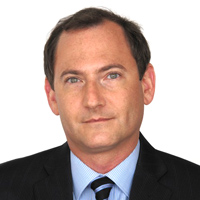Fed Leaves Rates Unchanged: What the Experts Are Saying
As widely expected, the Federal Open Market Committee took a 'wait-and-see' approach toward borrowing costs.


The Federal Reserve kept interest rates on hold at the conclusion of its latest policy meeting, a move that was widely expected given the uptick in inflation expectations under the new presidential administration, experts say.
The Federal Open Market Committee (FOMC) wrapped up its regularly scheduled two-day confab on Wednesday by keeping the short-term federal funds rate unchanged at a target range of 4.25% to 4.5%.
"Recent indicators suggest that economic activity has continued to expand at a solid pace," the FOMC said in a statement. "The unemployment rate has stabilized at a low level in recent months, and labor market conditions remain solid. Inflation remains somewhat elevated."
From just $107.88 $24.99 for Kiplinger Personal Finance
Become a smarter, better informed investor. Subscribe from just $107.88 $24.99, plus get up to 4 Special Issues

Sign up for Kiplinger’s Free Newsletters
Profit and prosper with the best of expert advice on investing, taxes, retirement, personal finance and more - straight to your e-mail.
Profit and prosper with the best of expert advice - straight to your e-mail.
The Fed has a dual mandate. In addition to stable prices, the central bank is supposed to support maximum employment. With the labor market in "solid" shape, the FOMC has become more attentive to price stability, experts say.
"With prices rising across many goods and services, and the potential for further acceleration due to increased geopolitical and regulatory uncertainty, the balance of risks is clearly tilted toward inflation," says Noah Yosif, chief economist at the American Staffing Association. "But with steady economic growth and low unemployment, the Fed also has time to be patient by letting inflation slowly crack under the pressure of rising real rates."
With the FOMC's latest rate decision now on the books, we turned to economists, strategists and other experts for their thoughts on what the move means for markets, macroeconomics and monetary policy going forward. Please see a selection of their commentary, sometimes edited for brevity or clarity, below.
Interest rates: the experts weigh in

"The committee continues to judge that the risks to achieving its employment and inflation goals are 'roughly in balance' and it remains 'attentive to the risks to both sides of its dual mandate.' Markets seem to have interpreted this statement as slightly hawkish, but we see nothing in the text to warrant that shift. If anything, the omission of more upbeat language on the labor market and the absence of references to the upside inflation risks posed by the new administration suggests that the committee's thinking has changed little since December and that the rise in rate expectations since then is unwarranted." – Samuel Tombs, chief U.S. economist at Pantheon Macroeconomics
"The statement was a little hawkish, but policymakers are on hold with a long break until the March meeting. Data between now and then will set the tone for that next big decision. Today's meeting is a non-event for Fed watchers. The central bank wants to be less of a factor over the next month as Trump takes the spotlight." – David Russell, global head of market strategy at TradeStation
"While tempting to cast the Fed statement as hawkish, that feels like an exaggeration. Any perception of a hawkish tilt is likely to create some market chop for the next few days and perhaps change expectations from two hikes to one this year. That will likely be short-lived but a little disruptive. The Fed is data dependent and probably more neutral now than they have been in a while. Markets have priced in the pause, and fundamentals rather than rates will drive the next equity move." – Scott Helfstein, head of investment strategy at Global X
"The Fed is in 'wait and see mode' and is likely to pause for an extended period of time because the labor market is solid even as inflation remains somewhat elevated in their view. Powell also admitted that there is more uncertainty related to policy shifts – including tariffs, immigration, fiscal police and regulatory policy – which is likely another factor driving the decision to pause." – Sonu Varghese, global macro strategist at Carson Group
"The Fed made the right call by keeping rates steady. Inflation is still a concern, but the economy is holding up. They're staying cautious, which makes sense. For now, this gives investors some stability as we watch for any shifts ahead. As always, stay focused on the long game." – Rusty Vanneman, chief investment strategist at Orion
"The FOMC decision statement was largely as I expected. The Fed remains in wait-and-see mode given solid economic data recently. Moreover, the new administration has just taken over and there’s been a flurry of executive orders, including several on tariffs and immigration. How these and other policy decisions impact the economy will be watched closely by the Fed and investors. We shall see if Chair Powell provides any insights at the press conference as to the committee's thoughts on the Trump administration's moves thus far. However, I wouldn’t hold my breath." – Lon Erickson, portfolio manager at Thornburg Investment Management
"Today's Fed non-action might be called the 'most predictable' in years, but it also opened the gates for a lot more interpretation going forward. Against the current backdrop of a new administration that is calling for more aggressive rate cuts, this was the first chance to see if there is any change in the rhetoric of Jay Powell. Unsurprisingly, Powell's statements remained consistent with prior meetings, and markets largely interpreted that as meaning restrictive policy will persist for longer than anticipated. While the Fed has described the goals of its dual mandate as being 'roughly in balance' there are hints that the inflation rate remains elevated while public opinion of the jobs situation is wavering, even if the data has not yet. The coming months will probably bring even more speculation if forthcoming policies will further exacerbate the divergence of these mandates." – Dann Ryan, managing partner at Sincerus Advisory
"Given the many lingering questions on trade and fiscal policy and the resulting range of potential outcomes, the Fed appears to be content to hold the line for now, while maintaining the flexibility to adjust their policy path as needed to address the balance of risks between its employment and inflation goals. Against that backdrop, the Fed has moderated its prior rate cut projections for 2025 and appears to be taking a 'wait and see' approach that will evolve based in part on fiscal policies that could bring inflation risk back to the forefront. A March rate cut can’t be ruled out but still seems unlikely." – Jim Baird, chief investment officer at Plante Moran Financial Advisors
"Pressing the pause button. The New Year saw the Fed entering a ‘new phase’ of its easing cycle, with strong growth and resilient labor market data providing scope for a more patient approach amid elevated data and policy uncertainty. While we continue to think the Fed’s easing cycle has not yet run its course, the FOMC will want to see further progress in the inflation data to deliver the next rate cut highlighted by the fact they removed the reference on inflation making progress." – Lindsay Rosner, head of multi-sector fixed income investing at Goldman Sachs Asset Management
"The 'wait and see' Fed left interest rates unchanged against a backdrop of solid economic growth, a resilient labor market, sticky inflation that remains above target, and uncertainty regarding the new administration's plans. Chair Powell pointed out that interest rates remain in restrictive territory and there is evidence of that with the weakness in housing. However, with the change in inflation over the past year holding up in the high-2% range for core PCE and job creation continuing at robust levels he noted that 'we do not need to be in a hurry to adjust our policy stance." With a low likelihood of clarity emerging in the near term on key unknown issues such as tariffs and fiscal spending – along with leading indicators that suggest both labor and inflation trends are on-track – we believe today's decision to 'wait and see' by holding interest rates steady is likely to represent the beginning of a pause that could last into the summer." – Josh Jamner, investment strategy analyst at ClearBridge Investments
Related Content
- Analysts' Top S&P 500 Stocks to Buy Now
- Stocks With the Highest Dividend Yields in the S&P 500
- Best Dividend Stocks to Buy for Dependable Dividend Growth
Profit and prosper with the best of Kiplinger's advice on investing, taxes, retirement, personal finance and much more. Delivered daily. Enter your email in the box and click Sign Me Up.

Dan Burrows is Kiplinger's senior investing writer, having joined the publication full time in 2016.
A long-time financial journalist, Dan is a veteran of MarketWatch, CBS MoneyWatch, SmartMoney, InvestorPlace, DailyFinance and other tier 1 national publications. He has written for The Wall Street Journal, Bloomberg and Consumer Reports and his stories have appeared in the New York Daily News, the San Jose Mercury News and Investor's Business Daily, among many other outlets. As a senior writer at AOL's DailyFinance, Dan reported market news from the floor of the New York Stock Exchange.
Once upon a time – before his days as a financial reporter and assistant financial editor at legendary fashion trade paper Women's Wear Daily – Dan worked for Spy magazine, scribbled away at Time Inc. and contributed to Maxim magazine back when lad mags were a thing. He's also written for Esquire magazine's Dubious Achievements Awards.
In his current role at Kiplinger, Dan writes about markets and macroeconomics.
Dan holds a bachelor's degree from Oberlin College and a master's degree from Columbia University.
Disclosure: Dan does not trade individual stocks or securities. He is eternally long the U.S equity market, primarily through tax-advantaged accounts.
-
 Your Guide to Buying Art Online
Your Guide to Buying Art OnlineFrom virtual galleries to social media platforms, the internet offers plenty of places to shop for paintings, sculptures and other artwork without breaking the bank.
-
 Samsung Galaxy S25 Ultra for $4.99 a Month: A Closer Look at Verizon’s Deal
Samsung Galaxy S25 Ultra for $4.99 a Month: A Closer Look at Verizon’s DealVerizon’s aggressive pricing makes Samsung’s top-tier phone tempting, but the real cost depends on your plan and how long you stay.
-
 I'm 59 with $1.7 million saved and lost my job. Should I retire?
I'm 59 with $1.7 million saved and lost my job. Should I retire?We asked professional wealth planners for advice.
-
 Your Guide to Buying Art Online
Your Guide to Buying Art OnlineFrom virtual galleries to social media platforms, the internet offers plenty of places to shop for paintings, sculptures and other artwork without breaking the bank.
-
 I'm 59 With $1.7 Million Saved and Just Lost My Job. Should I Retire at 59½, or Find New Work?
I'm 59 With $1.7 Million Saved and Just Lost My Job. Should I Retire at 59½, or Find New Work?We asked professional wealth planners for advice.
-
 A Wealth Adviser Explains: 4 Times I'd Give the Green Light for a Roth Conversion (and 4 Times I'd Say It's a No-Go)
A Wealth Adviser Explains: 4 Times I'd Give the Green Light for a Roth Conversion (and 4 Times I'd Say It's a No-Go)Roth conversions should never be done on a whim — they're a product of careful timing and long-term tax considerations. So how can you tell whether to go ahead?
-
 A 4-Step Anxiety-Reducing Retirement Road Map, From a Financial Adviser
A 4-Step Anxiety-Reducing Retirement Road Map, From a Financial AdviserThis helpful process covers everything from assessing your current finances and risks to implementing and managing your personalized retirement income plan.
-
 Metro by T-Mobile Is Giving Away This Samsung Galaxy A16: Which Plans Are Eligible?
Metro by T-Mobile Is Giving Away This Samsung Galaxy A16: Which Plans Are Eligible?Metro by T-Mobile is offering free Samsung Galaxy A16 phones on eligible plans right now. Here’s how the deal works.
-
 I Drive and Collect Classic Cars: Here’s How I Got in the Game Without Spending a Fortune
I Drive and Collect Classic Cars: Here’s How I Got in the Game Without Spending a FortuneAre classic cars a hobby or an investment strategy — or both? Either way, the vintage car scene is much cooler and more affordable than you think.
-
 My First $1 Million: Retired Middle School Teacher, 68, North Carolina
My First $1 Million: Retired Middle School Teacher, 68, North CarolinaEver wonder how someone who's made a million dollars or more did it? Kiplinger's My First $1 Million series uncovers the answers.
-
 The $183,000 RMD Shock: Why Roth Conversions in Your 70s Can Be Risky
The $183,000 RMD Shock: Why Roth Conversions in Your 70s Can Be RiskyConverting retirement funds to a Roth is a smart strategy for many, but the older you are, the less time you have to recover the tax bite from the conversion.